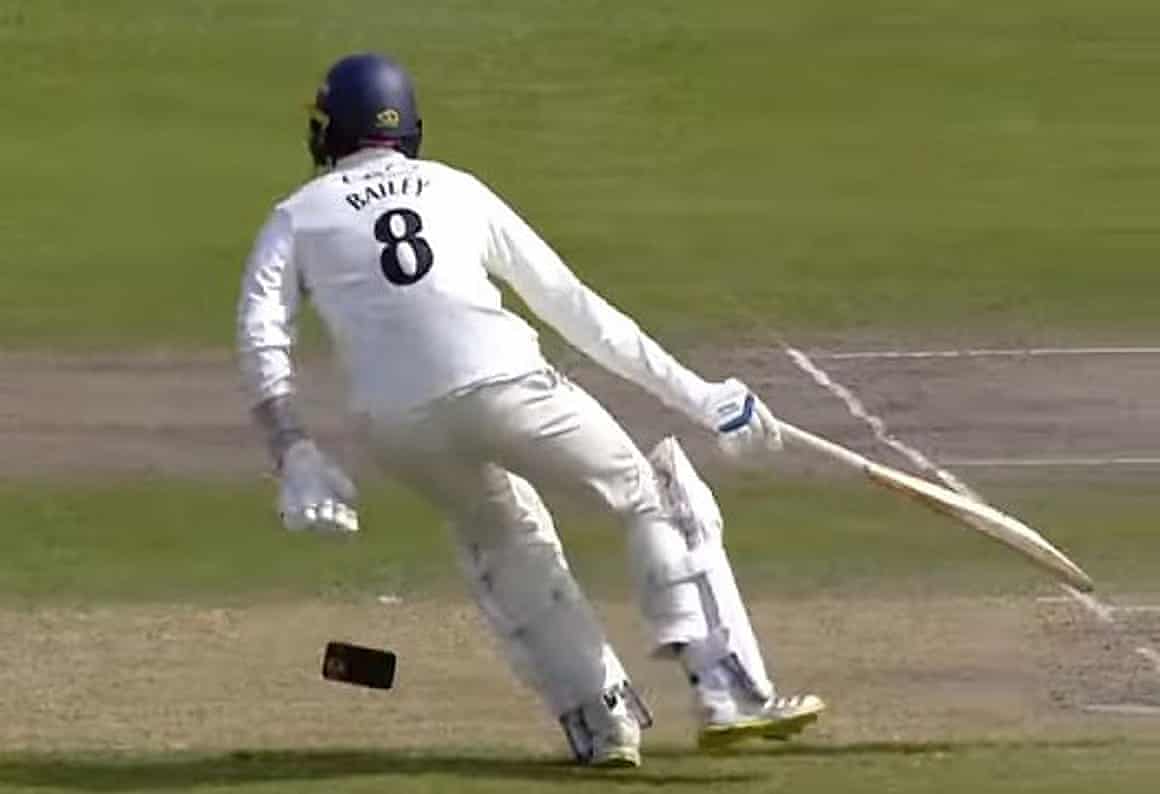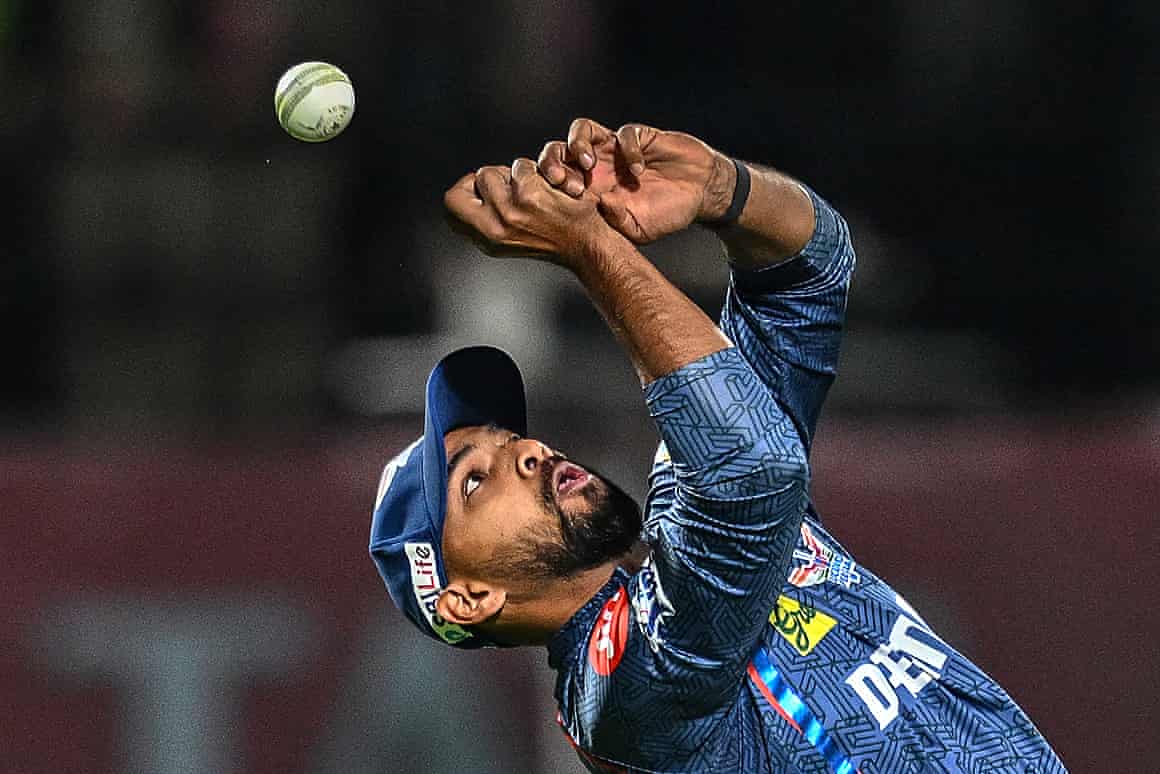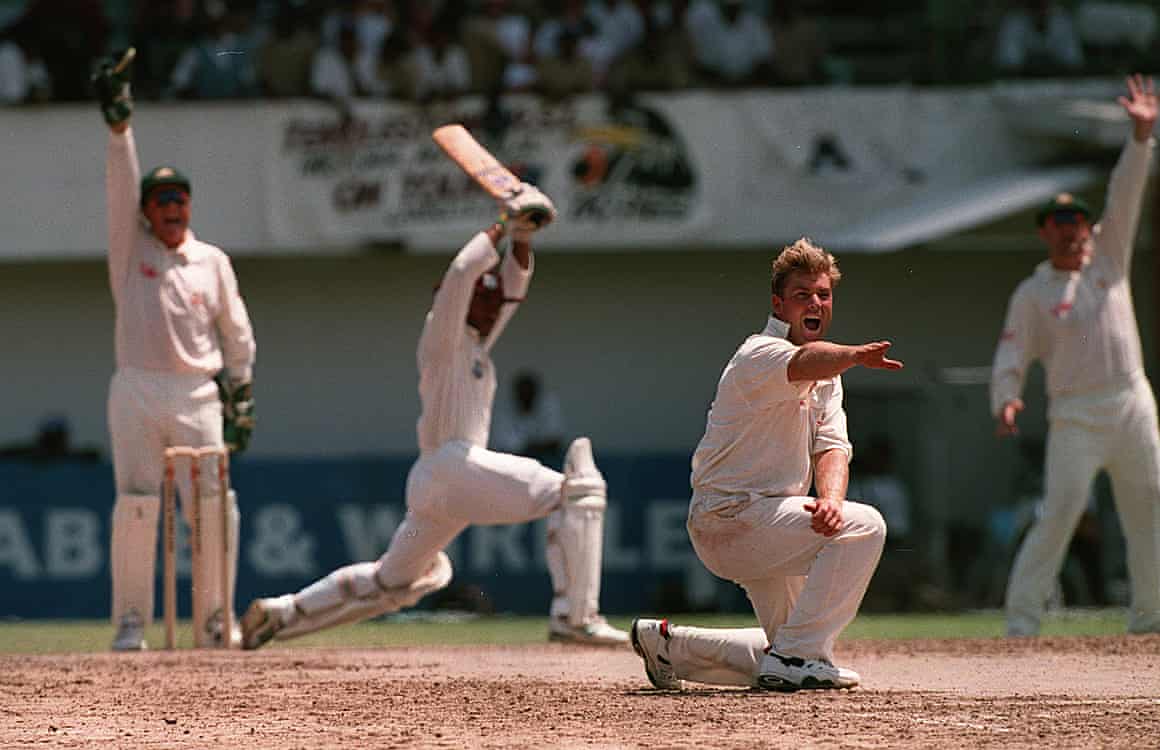|
Fund independent journalism
|
|
|

|
 |
|
|
Phones, sweets and sandpaper: a pocket history of cricketers’ unusual items
|
|
|
The mobile that fell out of Tom Bailey’s trousers when he was batting isn’t the strangest thing players have secreted in their whites
|
|
 |
 Tom Bailey drops his phone as Lancashire play Glamorgan in the County Championship. Photograph: LancsTV
|
|
 |
Tanya Aldred
|
|
|
|
When Tom Bailey’s mobile phone fell out of his pocket on Saturday as he was turning for a quick second during Lancashire’s Championship match with Gloucestershire, it brought some cheap laughs, as well as a sharp letter of warning from the ECB’s anti-corruption officer. It was also another chapter in cricket’s pocket history: from sandpaper to sandwiches. What, as Gollum pondered, has it got in its pocketses?
For Derbyshire left-arm spinner Fred Swarbrook, the answer was a lucky pebble. After developing the yips, a psychologist had advised him to take a stone on to the pitch and rub it before he was about to bowl. Sadly, it didn’t work and the luckless Swarbrook was forced to retire.
The occasionally tricky John Lever of Essex once stuffed an orange in his pocket and bowled it at Ian Gould first ball after telling him he could get him out with one (he didn’t). While Jack Leach’s glasses cloth, made famous during his one not out at the 2019 Headingley Test, lives on not only in his pocket but also through its own X account (which hasn’t posted since June 2023, but is still followed by nearly 3,000 people).
Neville Chamberlain was not the only man to have had a piece of paper in his pocket. At Edgbaston in 2012, the West Indian Denesh Ramdin reached an excellent hundred against England, before pausing to delve in his trousers and bring out a scrap with the words “Yea Viv, Talk Nah” scrawled on it, after Richards had criticised his batting performances. Sir Viv was unmoved.
The umpire Dickie Bird, whose claim to have stored and taken a call on Allan Lamb’s mobile during a Trent Bridge Test can probably be dismissed as a good story, was once given a set of false teeth by a worried Ashley Harvey-Walker during Lancashire’s snowy match with Derbyshire at Buxton in 1975. David Lloyd, fielding at short leg, and also unnerved by the pitch, handed over his too. Bird wasn’t keen, until the teeth were suitable wrapped in a hanky.
|
|
|
 |
 Cameron Bancroft gets caught with sandpaper in his trousers against South Africa in 2018. Photograph: Gallo Images/Getty Images
|
|
|
|
Steve Waugh never batted without his own handkerchief, a red one, poking like a dog’s tongue, out of his pocket. And that red handkerchief, (the Final Word podcast recently revealed) had a second life after Waugh gave Marlon Samuels a piece of his hanky in 2000-2001. Samuels then put it in his own pocket and, after reaching his first one-day hundred, pulled said scrap out to show the crowd. Virender Sehwag and Mohinder Amarnath were also red hanky fans, while Zaheer Khan favoured a yellow one. Tabraiz Shamsi topped the lot during the Mzansi Super League, when he celebrated taking a wicket with a magic trick, turning a handkerchief into a stick.
In 2013, South Africa’s captain Faf du Plessis was fined 50% of his match fee for rubbing the ball against the zip of his trouser pocket during the second Test against Pakistan – by 2015 zips on trousers had been banned by the ICC. Du Plessis was at it again in 2016, during the second Test against Australia at Hobart, when he was accused of rubbing the sugar from a mint on the ball – though it is unclear if he had stored mints in his pocket as well as his mouth. (Marcus Trescothick also admitted to doing this during the 2005 Ashes series.) A censorius David Warner noted gravely: “We hold our heads high and I’d be very disappointed if one of our team members did that.”
A couple of years later, Warner himself would be implicated in a pocket-affair, this time involving sandpaper. It was at the third Test at Cape Town when the South African broadcast team spotted young Australian Cameron Bancroft rubbing a little piece of yellow paper on the ball in an attempt to make it more agreeable for the bowlers. The technicians trained their cameras on him, and the supporting cast, and then posted a video clip on the ground’s big screen for everyone to see. A panicking Bancroft then shoved the sandpaper down his trousers but that subterfuge, as you’ll know, didn’t work and he, Steve Smith and Warner were sent home from tour and given hefty bans from the game.
|
|
|
 |
 Ray Illingworth (left) wasn’t happy with his captain Mike Atherton in the fallout from the ‘dirt-in-pocket’ affair. Photograph: Adrian Murrell/Getty Images
|
|
|
|
Another Australian story emerged after coach Justin Langer famously banned Marnus Labuschagne from putting a ham and cheese toastie in his pocket and taking it on to the field with him after lunch during Australia’s Test against India at the Gabba in 2021. “How do you reckon it looks, mate?” Australia lost that game too.
England have not been immune. In one of the more bizarre tactical decisions, they filled their pockets with jelly beans during the 2007 Test at Trent Bridge and proceeded to throw them at an unimpressed Zaheer Khan. Zaheer accused Kevin Pietersen of being the guilty man (though Chris Tremlett later admitted the culprit was Ian Bell) and, duly fired up, went on to take five wickets in England’s second innings to help swing India to victory.
One familiar pocket story comes from the 1990s and the dirt-in-pocket affair. The then England captain, 25-year-old Michael Atherton, perhaps unaware of how advanced cameras had become, was spotted rubbing dirt on the ball during the 1994 Lord’s Test. Athers, according to his diary, had picked up some dust from a used pitch on the Tavern side of the ground to keep the ball and his hands dry. Whether or not this was permitted by the laws is still debated, but he was fined £2,000 by a fuming Ray Illingworth, half for lying to the match referee and half for the dirt. Stubborn as ever, he fled to the Lake District for a holiday, kept his job, and still puts his hands in his pockets to this day.
Heat is on over IPL dropped catches
April often is the cruellest month for cricketers – all handwarmers and hover covers. But not this year, at least not in the UK. The climate lottery has brought a very warm spring, with under half the usual amount of rainfall (resulting in a record number of wildfires threatening some of the UK’s rarest wildlife).
In much of India, however, the spring tenderness has moved quickly into summer heat with much more ferocity. Delhi had its hottest April since 2022, with considerably less rainfall than is usual – 0.7mm compared with the average of 16.3mm. The temperatures have soared past 40 degrees, “up to 5C above the seasonal average” according to ClimaMeter. By late April, the Delhi authorities were instructing schools to cancel all outdoor activity, timetable regular water breaks and have rehydration salts on hand.
But the IPL has thundered on regardless, the health of fans and players seemingly a side issue. Those hoping to watch the Gujarat Titans play the Delhi Capitals at Ahmedabad were promised “mist fans in all sun-facing stands, along with sunscreen and sun visors. Additionally, free drinking water, ORS [rehydration sachets] and mobile medical facilities” making the match sound more like a trial than a pleasure. On the field, a number of players including Axar Patel and Prasidh Krishna struggled with cramp, while a visibly distressed Ishant Sharma spent much of the match crouched on the sidelines.
There seems to be no desire to have a conversation around finding a different window for the IPL, when the heat is less severe. But what has been discussed is the inordinate number of dropped catches in this year’s competition, from those who are normally a safe pairs of hands. And the reason, it has been suggested, is that players are simply not practising endless numbers of high catches, or boundary catches, because it is just too hot to spend the extra time outside.
|
|
|
 |
 Nicholas Pooran drops Prabhsimran Singh while fielding for Lucknow in their IPL game against Punjab Kings. Photograph: Arun Sankar/AFP/Getty Images
|
|
|
|
So the climate crisis brings you an IPL with worse cricket, in harsh conditions for spectators and player, all sponsored by Aramco, the state-owned Saudi Arabian oil and gas company whose CEO Amin Nasser has said the world should “abandon the fantasy of phasing out fossil fuels”. Cruel months indeed.
Quote of the week
The fielding was poor at times, very, very poor, and the movement and the cutting twos and things like that” – Lauren Winfield-Hill speaks frankly about England Women’s lack of finesse on the field during the winter.
Memory lane
|
|
|
 |
 Shane Warne appeals for an lbw against Keith Arthurton during Australia’s historic win over West Indies in the fourth Test at Kingston, Jamaica, in May 1995. Photograph: Clive Mason/Getty Images
|
|
|
|
Thirty years ago this month, something of a pivot point in modern cricket history. Australia arrived in the Caribbean in early 1995 to face a world No 1 West Indies team who had not lost a home series since 1973 and not a series of any sort since 1980.
Mark Taylor’s Australia hammered the hosts in Bridgetown, there was a rain-affected draw in St John’s, then Curtly Ambrose and Courtney Walsh blitzed the home side to a nine-wicket win in Port of Spain.
So the teams headed to Kingston, Jamaica, with the series in the balance. Richie Richardson’s century for West Indies kept the home side in the game, but 188 for three quickly became 265 all out and Steve Waugh’s epic double century put Australia in a dominant position. Paul Reiffel and Shane Warne, with four wickets apiece, ripped through the Windies lineup and the tone was set for the next decade.
Still want more?
Andy Bull on Vaibhav Suryavanshi, the 14-year-old sensation with cricket world at his feet.
Radio, Ceefax and text: the history of cricketers being selected for England. By James Wallace.
Malala, Miss America and the MCC: Raf Nicholson at the Women’s T20 World Cup launch.
Holding Fever: when club side Rishton signed the fastest bowler in the world. By Scott Oliver.
And here are Gary Naylor’s county cricket talking points.
Contact The Spin …
… by writing to tanya.aldred.freelance@theguardian.com.
In?
To subscribe to The Spin, just visit this page and follow the instructions.
|
|
|
Advertisement
|
|
|
 |
|

|
Manage your emails | Unsubscribe | Trouble viewing?
|
| You are receiving this email because you are a subscriber to The Spin. Guardian News & Media Limited - a member of Guardian Media Group PLC. Registered Office: Kings Place, 90 York Way, London, N1 9GU. Registered in England No. 908396 |
|
|
|
|
|